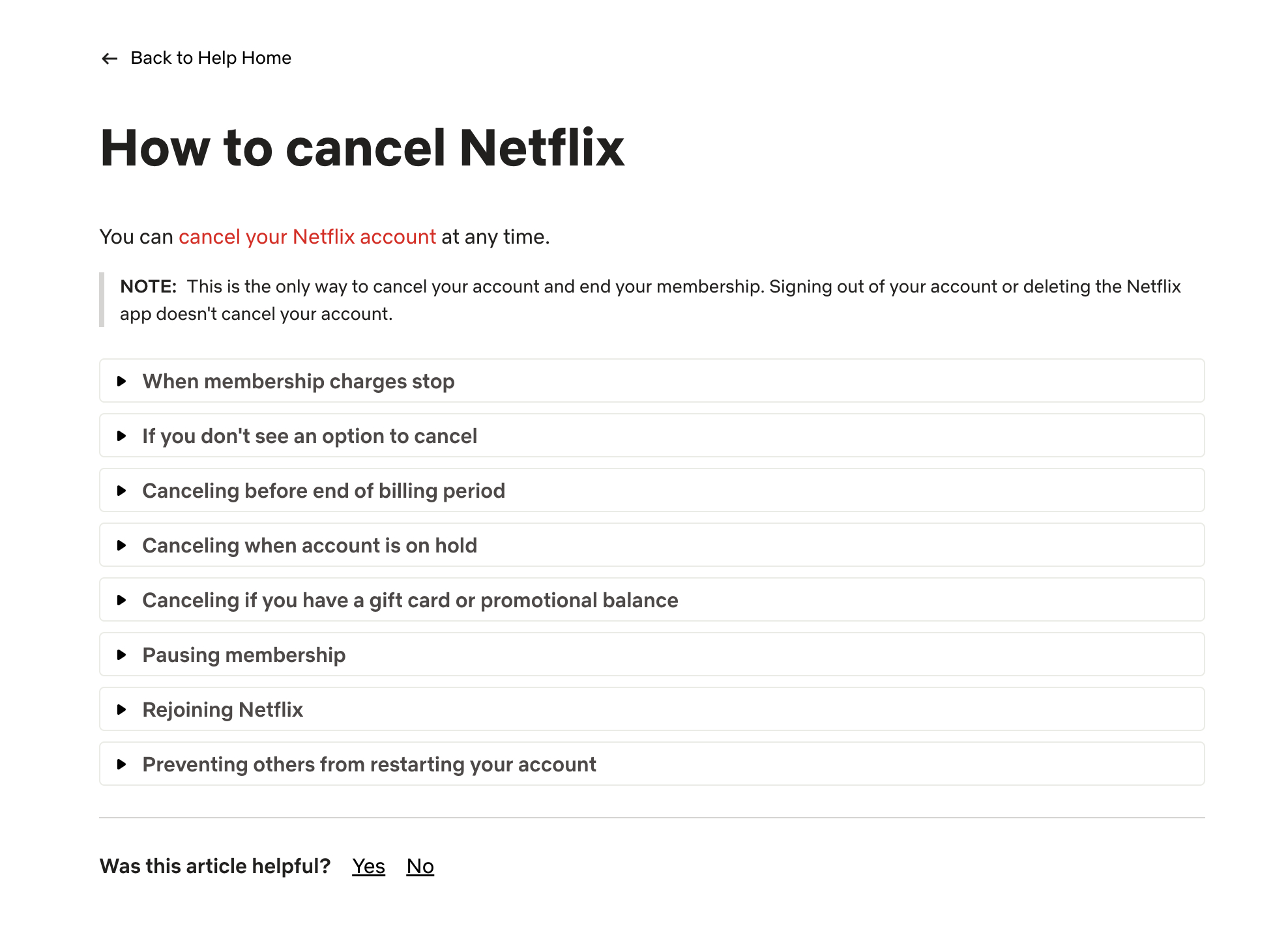
How much do you pay for streaming subscriptions each month? Whatever number popped into your head is likely well below the actual tally.
According to a 2023 Forbes Home study, people are spending an average of $553 per year on streaming services with nearly 49% of consumers paying for access to three or more platforms each month. That same survey found that 48% of people admit to barely using some of their subscriptions, while 45% of those polled revealed they were paying for platforms simply because they forgot to cancel following a free trial. In the age of auto-renews, one-click sign-ups, and annual payments, it’s easy to underestimate just how many subscriptions we’re paying for.
And that’s what plenty of companies are now counting on. It’s become a business model unto itself.
It’s part of the reason why the subscription-based economy – i.e. how much money corporations pull in from recurring customer charges – is set to jump to $12.5 billion by 2026. We might not be able to control what services like Netflix, Amazon, Hulu, Apple TV+, Disney+, Max, Paramount+, Criterion, Fubo, Youtube TV, and Peacock (my god there are a lot of these, aren’t there?) charge as an entry fee to their platforms but we can look to cut ones that we aren’t using enough to justify the expense. To that end, we’ve rounded up some of the biggest platforms cornering the streaming market right now to figure out which are worth their price tags. We’ll break down how to bundle, churn, and ultimately save when it comes to your binge-watching habits without missing out on the shows and movies that matter to you.
PART I — Embrace The Churn

Living that frugal life when it comes to monthly subscriptions doesn’t have to be so limiting. More and more companies offer plans for users to pause their billing for months at a time without losing any of their account history. So if you only tuned into Max for new episodes of True Detective season four, its recent finale might be a good enough excuse to take a temporary step back from the streaming platform.
This is where free apps like JustWatch come in handy too. They break down show schedules, letting you know when and where to catch your favorite films and series. By keeping track of the weekly release cycle of a series like Shogun — which drops on FX and Hulu on Feb. 27th — you can decide whether to pay for an extra month or two while pausing your plan somewhere else — say, Netflix? This is called churn and it’s simply a way of prioritizing which platforms offer you the most content in any given month.
Though it might mean becoming a bit more intentional with your binge-watching habits, figuring out which upcoming shows and movies you can pass on, and which might spark some major FOMO if you’re not watching weekly can save you some serious change — and, probably, a few hours of mindlessly scrolling through the content mill.
Here’s how each platform’s suspension and cancellation policy works:
Netflix
Netflix offers the option to suspend service one month at a time for Standard plan subscribers. Users can also opt to cancel their membership while keeping all of their watch history and account information for up to 10 months.
Amazon Prime
Amazon offers the option to pause Prime membership indefinitely instead of outright canceling. Unfortunately, if you’re signed up for Prime Video through your Prime account, suspending will mean you lose that free, two-day shipping perk.
Hulu
Hulu lets you pause your subscription for up to 12 weeks at a time, though you can choose exactly how many weeks you want off by heading here.
Apple TV+
Apple TV+ doesn’t allow members to pause their subscription but you can cancel (and return) via your iTunes account or on their website.
Disney+
Like Apple TV+, Disney+ doesn’t offer a pause membership option, so canceling and renewing down the line might be your best bet.
Peacock
If you’re paying for Peacock’s premium, ad-free tier, canceling means the streaming service automatically downgrades you to its free, ad-supported tier. So, you can still access most of its content library, you’ll just have to sit through a few more commercials.
Max
Max doesn’t let users pause their subscription to its platform, but you can cancel and renew, possibly scoring better sign-up deals depending on the time of year.
PART II — Try Bundling
A recent CNBC report predicted 2024 will be the year of the streaming bundle, but you don’t have to wait to start consolidating some of your services. Whether it’s through your phone carrier or a consequence of monolith corporations like Disney buying up smaller platforms, there are ways you can pay less for more when it comes to streaming. Below are some of the best bundles available at the moment:
Disney+ Bundle Trio (Disney+, Hulu, ESPN+)
Disney offers a variety of combinations when it comes to its streaming services but this trio, which includes ad-supported versions of Disney+, Hulu, and ESPN+ is really the best value. For $14.99 a month, users get access to all of Disney’s library — plus their original content slate with Marvel — original programming from Hulu — plus day-after viewing of network TV — and access to ESPN’s various channels. It’s a “something for everyone” deal that just can’t be topped.
Paramount+ with Showtime
While a Showtime subscription would have cost you $11.99 per month and an ad-free membership on Paramount+ will set you back $5.99 per month, paying $11.99 per month for both means you save money, get access to CBS, CBS Sports, Paramount+ originals, fresh from theaters movies, and the latest season of Yellowjackets.
AMC+
AMC+ isn’t advertised as a bundle but it includes more content than just the latest spin-off of The Walking Dead. If you purchase the annual subscription, you’ll pay $6.99 per month for a handful of live channels plus access to movies and series from Shudder, Sundance Now, BBC America, and IFC Unlimited.
Max
Again, Max isn’t billed as a bundle but after Warner Bros. merged with Discovery, purchasing any tier subscription means you get access to WB movies, HBO and HBO Max original series, Studio Ghibli, CNN, Sesame Street, Looney Toons, Food Network, Magnolia Network, TLC, TCM, The CW, and more Discovery Channel shows.
Apple One
While not solely a streaming bundle, Apple One offers customers the option to combine multiple services under one bill. For $17 a month, subscribers to the Individual plan can get Apple Music, Apple TV+, Apple Arcade, and 50 gigabytes of iCloud storage.
PART III — Go The Ad-Supported Route
With more and more streaming platforms trying to court advertisers — and convince users to stay despite price hikes — ad-supported tiers are now the newest binge-watching money grab. You might be thinking, “Aren’t commercials what we’re paying to avoid here?” Yes, but unlike network TV, ads that play before and during streaming series aren’t as time-consuming or disruptive. Here’s how each streamer’s ad-supported plan breaks down.
Netflix
For $6.99, fans can watch Netflix with ads that run ahead of newly released movies and before and during older films and TV shows. In total, fans can expect about 5 minutes worth of ads to play during an hour-long watch but, unfortunately, not all of Netflix’s content library is available on this plan. To have wider access to Netflix’s catalog, users need to pay for the Standard or Premium plans which cost $15.49 per month and $22.99 per month, respectively.
Hulu
Hulu’s lowest-level tier costs $7.99 per month and features ads that play before and during its programming. Unfortunately, Hulu’s ads tend to run longer — anywhere from 30 seconds to two minutes — and you’ll likely have four or more interruptions during an hour-long watch. In some instances, that means ad runtime can clock in at more than 10 minutes which might be enough to justify looking into the platform’s No Ads option of $14.99 per month.
Amazon Prime Video
Amazon recently announced it was turning its cheapest subscriber tier into an ad-supported one, continuing to charge $14.99 per month (for Prime users) and $8.99 per month (for Prime Video subscribers) while introducing up to three minutes of advertising during their hour-long shows. To avoid having your binge-watch interrupted, you’ll have to fork over an additional $2.99 per month.
Apple TV+
Currently, Apple TV+ doesn’t have an ad-supported tier, though you will see pre-roll promos for other shows and movies on the streamer when you pay the $9.99 per month bill.
Disney+
Expect to see ads playing before and during a show or film on Disney+ when you subscribe to the $8 per month plan. The streamer has promised that fans will sit through no more than four minutes of these breaks while watching an hour-long program.
PART IV — Wait For Deals
Plenty of streaming services offer deals during certain times of the year — think during the holidays and at the start of the new year. Even more have partnerships with phone carriers and first-time sign-up discounts that can save you big bucks for an allotted amount of time. Keep checking in on your subscriptions to see which might be due for a bit of “refinancing,” and check out some of the best deals we’ve earmarked for 2024 below.
Apple TV+
Students get free Apple TV+ along with an Apple Music subscription for $9.99 per month. T-Mobile customers with a Go5G or Go5G Plus plan can also get a free subscription.
Disney+ Trio Bundle
Any Verizon customer with myPlan can add a Disney bundle, giving them access to Disney+ Premium (no ads), Hulu, and ESPN (with ads) for just $10 per month.
Hulu
If you’re a college student, you might qualify for a $1.99 subscription to Hulu’s ad-supported tier. If you buy the annual plan, you’ll end up saving nearly $16 per year.
Netflix
Verizon customers with myPlan can add a Netflix and Max bundle (with ads) for $10 per month.
PART V — The “Cancel My Subscription” Hack
As part of this article, my editor felt inspired to cancel his Amazon Prime Channel subscription to Showtime now that The Curse is over. They offered him two months at $0.99 per month. If he were the type who could track that sort of deal and wouldn’t accidentally let it linger until the charges restarted and ran for a year, it might have been very useful! Plenty of other services offer similar deals at the point of cancellation.
